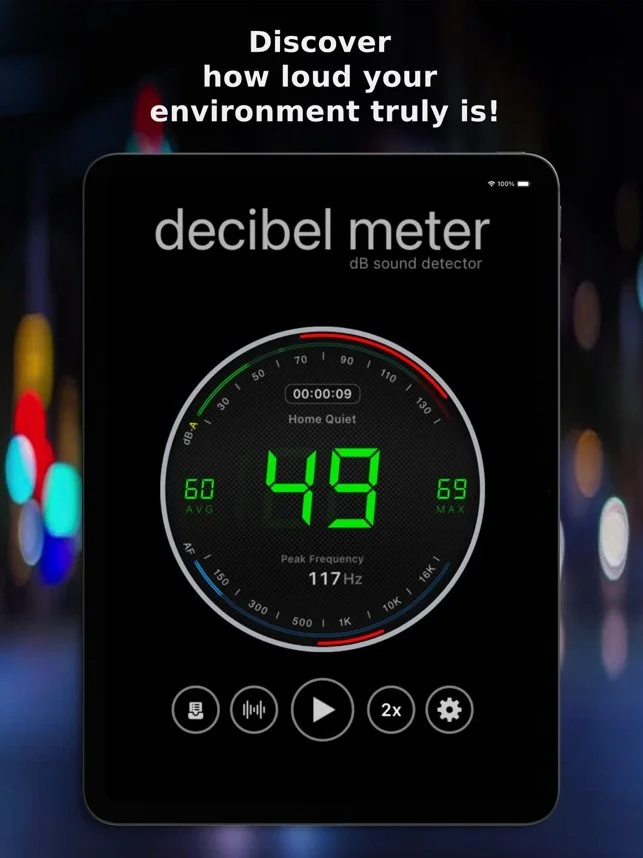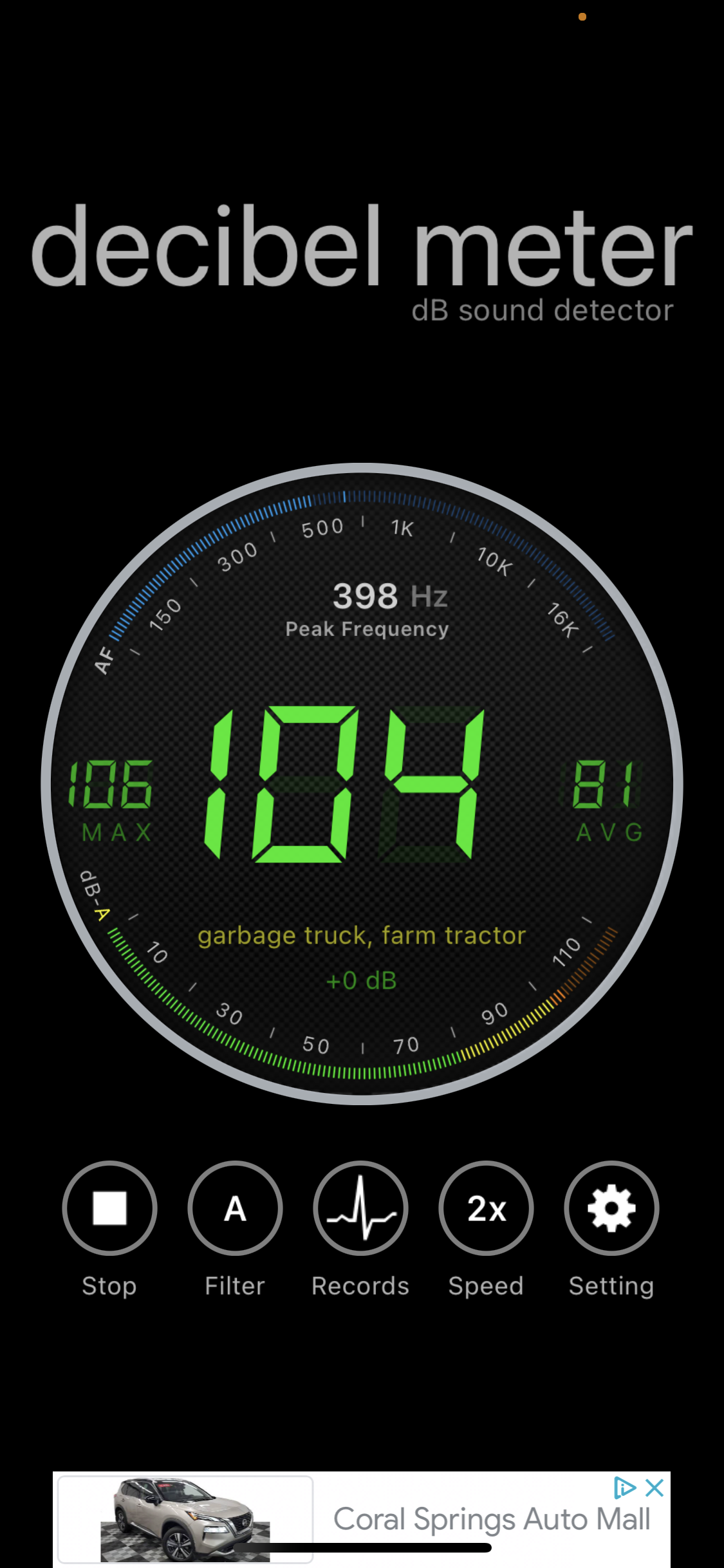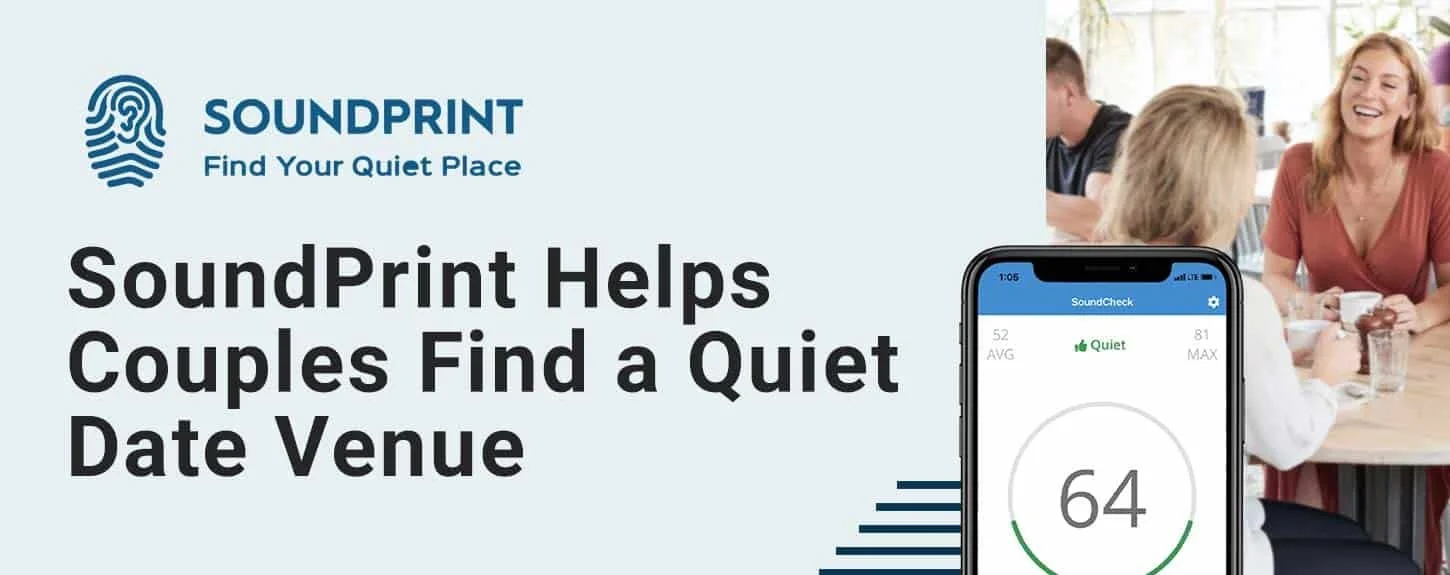Choose a Sound Level Meter and On-line Hearing Test
It's often hard to know how loud something really is. So how would you tell? The best way is to measure it directly.
In the past, that required fancy equipment—but today, you may already have a sound level meter and not even realize it. For example, if you have an Apple Watch, look for the yellow ear icon. You can also easily download a sound level meter app on your smartphone. (note that although dBA weighted is the convention, dBC or dBZ gives more information. see section below)
Some apps can even measure your hearing and track changes over time. Others help you find quiet restaurants or flag locations that may be dangerously loud.
We recommend downloading both a sound level meter app and a hearing test app to start taking control of your sound environment. There are many good options available, and we’ve listed a few below.
Of course, we hope you'll also try the EarAware App when it's ready!
Coming Soon: The EarAware App
We're developing an all-in-one solution that includes:
A built-in Sound Level Meter
A Self-Administered Hearing Test
Educational tools and links
Gamified progress tracking with Ear Force Badges
Try SoundPrint, if you are looking for a quiet place to enjoy dinner!
EarAware is developing its own app!
It will include a Sound Level Meter, Self Administered Hearing Test, and Educational Links and earn Ear Force Badges… Coming soon!
Decibel Meter Sound Detector
Iphone version, go to apps
Android version, go to Google Play
NIOSH Sound Level Meter App
Iphone version, go to apps
Android version, go to Google Play
SoundPrint app
Like Yelp, but for Noise Measure Sound Levels Find quiet and moderate places so you can hear and connect with others. Your submissions allow the community to find and promote quieter venues
Understanding dBA, dBC, and dBZ: Not All Decibels Are Equal
When you measure sound with a decibel meter, the reading isn’t just a raw number—it’s filtered to match how we hear. That’s where A, C, and Z-weighting come in. These are filters that adjust which frequencies the meter emphasizes or ignores.
dBA (A-weighting) filters out much of the low and high frequencies to reflect how our ears hear softer sounds, especially in quiet environments. It was designed using data from the 1930s and became the standard for workplace noise exposure. But it can severely underreport the true energy of deep bass and sharp treble—frequencies that still cause harm, even if they’re less noticeable.
dBC (C-weighting) is a broader filter. It includes much more low-frequency and high-frequency content and reflects how we hear louder sounds, like concerts or construction equipment. It’s more accurate in environments where intensity—not just perception—matters.
dBZ (Z-weighting) applies no filtering at all. It’s a flat measurement across the full human hearing range (about 10 Hz to 20,000 Hz) and gives the most accurate view of total sound energy. It’s used in labs or advanced meters, but not always available on standard devices.
Originally, the thinking behind A-weighting was, “If you can’t hear it well, it’s less of a threat.” But we now know that damage can still happen in frequencies you barely perceive. Hidden hearing loss, tinnitus, and auditory fatigue often begin in these underrepresented regions. That’s why EarAware is moving towards dBC: it strikes the right balance—capturing the energy A-weighting misses, while remaining practical for real-world use. If we truly want to protect our ears, we have to stop measuring only what we hear and start measuring what actually reaches and harms the ear.
To understand how this plays out in practice, imagine you play a steady tone at 4000 Hz (4 kHz) and measure it at 100 dBZ. On a decibel meter set to A-weighting (dBA), you’d still see about 100 dB because our ears—and the A filter—are most sensitive to that frequency. The C-weighting (dBC) would also show about 100 dB, since it doesn’t reduce sounds in that range much either.
Now try a different sound: a low bass tone at 250 Hz, also measured at 100 dBZ. This time, the dBA reading drops way down to around 80–85 dB, because A-weighting filters out low frequencies to match how our ears naturally hear. But dBC would still show around 95–98 dB, since it keeps more of the bass in.
Now play both tones—the 4 kHz and the 250 Hz—at the same time. Since you're adding energy, the total dBZ goes up to about 103 dB. The dBC reading also goes up and reflects most of that combined energy. The dBA meter, though, mostly still reflects just the 4 kHz tone, since it's filtering out most of the bass.
Add a third tone at 8000 Hz (8 kHz), also at 100 dBZ, and the total energy rises again. Now dBZ shows about 105 dB. The dBA reading increases a bit more because our ears are more sensitive to 8 kHz than to bass, so the A-weighting doesn’t cut it out as much. dBC still shows almost the full energy.
So what’s the big idea? Z-weighting (dBZ) shows all the sound energy without filtering. C-weighting (dBC) is closer to real energy levels but still somewhat shaped to human hearing. A-weighting (dBA) tries to match what we hear best—but that can hide how much low or high-frequency energy is really there. That’s why dBA can sometimes give a false sense of safety in loud environments filled with bass or high-pitched noise.
For those who prefer another format:
Scenario: 100 dBZ Pure Tones at Different Frequencies
1. Single Tone at 4 kHz
· dBZ (unweighted): 100 dB
· dBA: ~100 dB (A-weighting barely affects it because human ears are most sensitive at 4 kHz)
· dBC: ~100 dB (C-weighting also barely affects this frequency)
2. Single Tone at 250 Hz
· dBZ: 100 dB
· dBA: ~80–85 dB (A-weighting reduces low frequencies significantly)
· dBC: ~95–98 dB (C-weighting reduces low frequencies only slightly)
3. Both Tones Combined (4 kHz + 250 Hz)
· dBZ: ~103 dB (because energy adds; not a straight sum, but a 3 dB increase for equal power)
· dBA: ~101–102 dB (mostly reflects the 4 kHz tone; the 250 Hz tone barely adds due to filtering)
· dBC: ~102–103 dB (both tones contribute more fully here)
4. Three Tones Combined (4 kHz + 250 Hz + 8 kHz)
· dBZ: ~105 dB (adding more energy again)
· dBA: ~102–103 dB (4 kHz and 8 kHz are heard well; 250 Hz still mostly ignored)
· dBC: ~104–105 dB (all tones contribute nearly fully)



